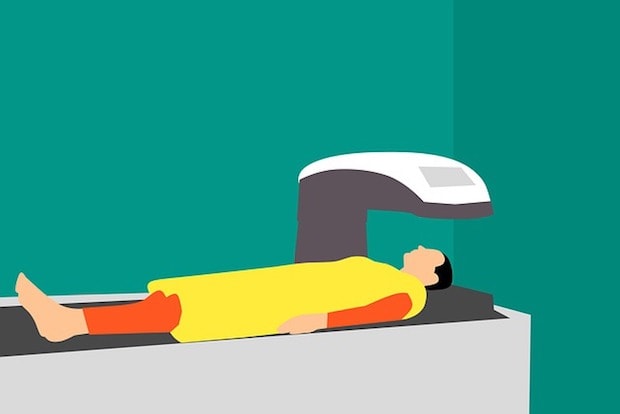Table of Contents
What is Epilepsy?
Around 1.2 percent of the United States population has epilepsy. This means that around 3.4 million people are living with epilepsy nationwide. This brain disorder can be a terrifying phenomenon for those who are undiagnosed. Epilepsy often involves repeated seizures over time, resulting in an abnormal firing of brain cells. [1]
Epileptic seizures typically begin at the ages of five and 20, but older adults over 60 are also affected. Seizures can occur at any age, and a diagnosis is essential to prevent potentially dangerous complications. Several anticonvulsants and antiepileptic drugs are available to help with symptoms and prevent seizures. These medications include Lamictal (lamotrigine), Dilantin, Topamax (topiramate), and Keppra (levetiracetam). Read on to learn more about the symptoms and treatments available for epilepsy and seizures. [2]
Why Does Epilepsy Occur?
The brain is made of billions of neurons that transmit information back and forth. Epilepsy occurs when these neurons misfire, but this often occurs with little consequence. A seizure occurs when many of these neurons misfire at the same time in certain locations in the brain. When these electrical discharges occur, it can cause muscle twitches and spasms, affecting mood, behavior, thoughts, or altered consciousness. [3]
Many people confuse seizures and epilepsy, but there is one key difference. Epilepsy is a neurological condition characterized by two or more unprovoked seizures. Seizures are a side effect of epilepsy, but not everyone who has a seizure has epilepsy. Many people may have one seizure in their life but not have epilepsy. [4] Epilepsy occurs for several reasons, and there is not one specific cause. Age and family history play a major role, especially if seizures have occurred frequently in your relatives. Having prior neurological conditions like dementia or specific head injuries can also increase your risk of developing epilepsy. Symptoms of epilepsy can vary from person to person. Because it affects the coordination of the brain, the symptoms can look differently on everyone affected. The most common signs include: If you have epilepsy, you will often feel the symptoms before a seizure occurs. You will have the same type of seizure each time, so you can tell if a seizure is about to occur and take the proper precautions. [5] There are two main types of seizures: focal and generalized. Seizures are classified based on the area of the brain in which they occur. The different brain areas determine the symptoms and severity of the seizure. These types of seizures occur in just one area of the brain. Focal seizures are divided into simple partial seizures and complex partial seizures. Simple partial seizures occur without a loss of consciousness, but you may experience altered emotions and change the way things look, taste, sound, or look. You may also experience jerking movements of the arms or legs and sensations of tingling, dizziness, or flashing lights. Complex partial seizures involve a loss of consciousness or awareness. If you experience this type, you may stare into space and perform repetitive movements. These repetitive movements may include chewing, swallowing, hand rubbing, or walking in circles. These symptoms may be confused with narcolepsy or migraines, so make sure you see a doctor if you are confused by your symptoms. These types differ from focal seizures because they involve all areas of the brain. There are six main types of generalized seizures, including: Absence seizures: These types are also called petit mal seizures and most commonly occur in children. Most often, the symptoms involve staring into space, lip-smacking, and eye blinking. Absence seizures can occur in clusters and make a person lose awareness of their surroundings. Clonic seizures: Jerky movements of the neck, face, and arms are most associated with this type. Myoclonic seizures: These types are slightly different from clonic seizures and appear as sudden jerks or twitches. The arms and legs are most affected by these erratic movements. Tonic seizures: Muscles may stiffen suddenly with tonic seizures. Stiffening of the back, arms, and legs may cause a person to fall to the ground when experiencing a seizure. Atonic seizures: These seizures may also cause a person to drop to the ground. They cause a loss of muscle control, often leading to a collapse or fall. Tonic-clonic seizures: These are the most dramatic types of seizures and lead to a loss of consciousness, body stiffening, and bladder control loss. In some cases, the person may also bite their tongue. [5] Seizures are a serious medical condition, so receiving a proper diagnosis is essential. Initially, a doctor will undergo a physical exam. Once that is completed, they will test your motor abilities and determine your mental function. An electroencephalogram (EEG) can diagnose epilepsy by attaching electrodes to the scalp. These electrodes track the electrical activity of the brain and determine if neurons are misfiring. MRI (magnetic resonance imaging) and CT (computerized tomography) scan allow doctors to detect lesions or abnormalities. Neurological disorders can be very complicated, so doctors will perform many other tests to diagnose epilepsy. [5] There are several anticonvulsants or antiepileptics available to prevent and control seizures. Drugs like Lamictal (lamotrigine), Dilantin, Topamax (topiramate), and Keppra (levetiracetam) work by inhibiting or exciting the electrical signals between neurons in the brain. Seizures occur when there is an imbalance in these circuits. Depending on your preferred medication method, Lamictal also comes in Lamictal chewables. Antiepileptic drugs work in several different ways. They may alter neurons' electrical activity by affecting sodium, potassium, or calcium channels in the cell membrane. These drugs also change chemical transmissions between neurons. Once antiepileptic drugs are consumed, they circulate throughout the body and into the brain, regulating and inhibiting seizures. It is essential to take the proper dose recommended by your doctor. If you need to stop taking these drugs, please tell your doctor because ceasing treatment can lead to severe side effects and increase the risk of seizures. [6] The content in this article is intended for informational purposes only. This website does not provide medical advice. In all circumstances, you should always seek the advice of your physician and/or other qualified health professionals(s) for drug, medical condition, or treatment advice. The content provided on this website is not a substitute for professional medical advice, diagnosis, or treatment.
Symptoms of Epilepsy
Types of Seizures
a. Focal Seizures

b. Generalized Seizures
Diagnosing Epilepsy

Medications for Epilepsy
